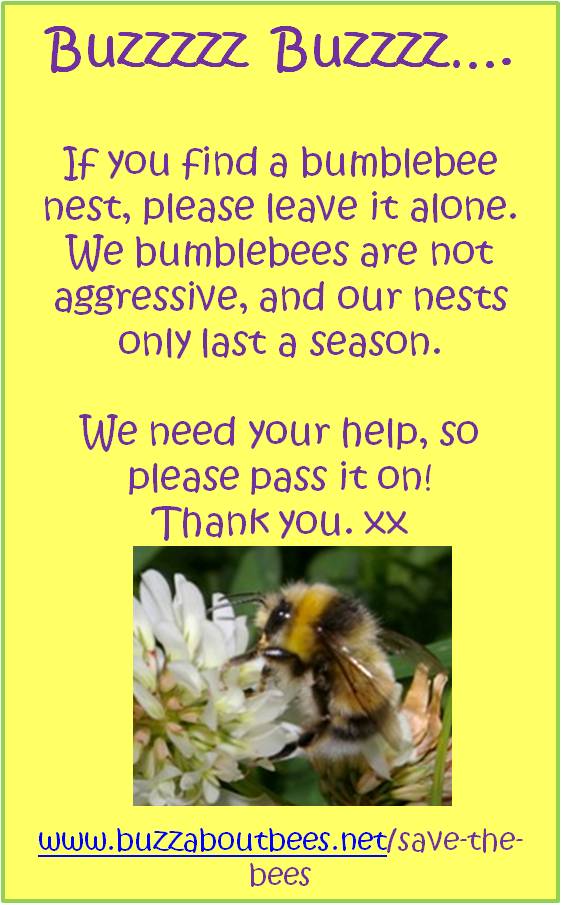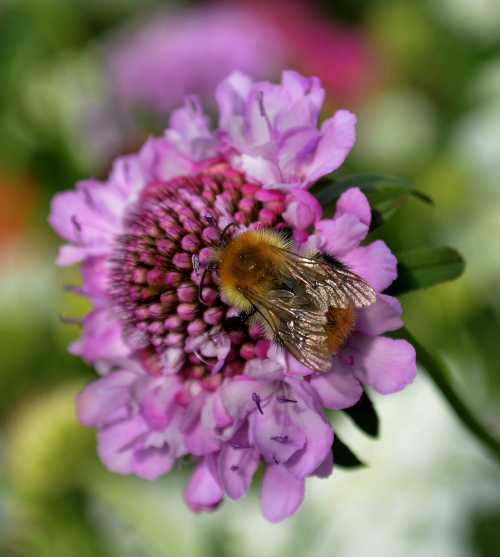5 Reasons To Protect Bumble Bees And Bumble Bee Nests!
Updated: April 2023
Bumble bee populations have been declining in many countries throughout the world.
It’s also unfortunate that there are many attempts to remove bumble bee nests and destroy them, quite unnecessarily. This is a great shame. Isn't it high time we protect bumble bee nests instead?
Why? Bumble bee species have varied needs, and habitat loss has reduced the number
of suitable nest sites available to bumble bees. Humans cannot always
easily compensate by providing artificial nest sites.
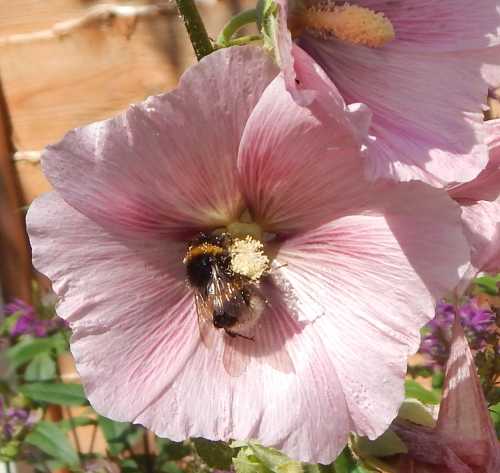 Beautiful bumble bee foraging on hollyhock.
Beautiful bumble bee foraging on hollyhock.I have a page about nest removal, and you will see that firstly, I try to dissuade people from destroying or attempting to relocate nests.
The fact is:
it is
rarely necessary to move or destroy a bumble bee nest: bumble bees are not aggressive, and at the end of the
season, the whole colony shall die naturally anyway.
This site also has a page with suggestions if a neighbour is attempting to force you to remove a bumble bee nest from your property.
5 reasons to protect bumble bee nests
Quite apart from the fact that bumble bees are beautiful, enchanting creatures in their own right.....
1. Bumble bees provide a vital pollination service, contributing to diversity and beauty in the landscape, parks, farmlands and in our gardens.
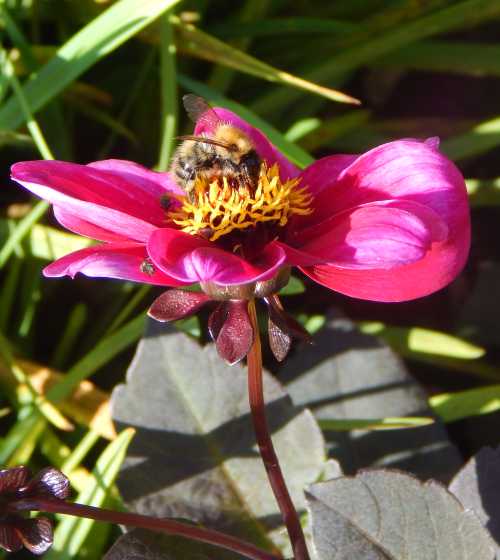 Bumble bee on dahlia flower.
Bumble bee on dahlia flower.2. The decline of bumble bees is a concern, and they are threatened by a wide range of issues, such as habitat
loss, pesticides, and diseases.
3. Given the very temporary nature of bumble bee nests, there is seldom a valid reason for their removal, and successfully relocating bumble bee nests cannot easily be guaranteed: bumble bee queens are ‘fussy’ and different species of bees will require different flora and nesting conditions.
4. Even when nest sites are naturally selected, failure rate of colonies can be as high as 72% (1).
5. The colony will only last a season, so the nest will no longer be active by the end of summer.
Do you agree that it would be a good idea to protect bumble bee nests?
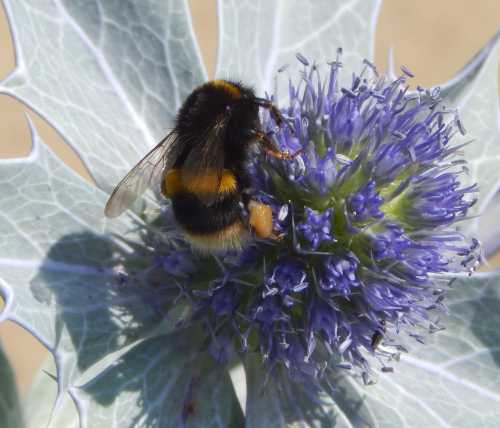 Bumble bee on sea holly.
Bumble bee on sea holly.Do you think it would be better if bumble bee nests were legally protected so that they can only be removed if absolutely necessary?
If you agree, perhaps you could copy
and paste the above information and email it to your local council and/or political
representative?
Anyway.....it's just a thought! The more people who make a noise
about this issue, the better!
What else can we do to help bumble bees?
We can encourage others to develop a positive attitude toward bees, and to be less fearful of nests. This can be done via social media, and with your contacts as and when appropriate.
The aim is to encourage people to protect bumble bee nests rather than destroy them.
Reference
(1) Goulson: Bumblebee Behaviour And Ecology, p6: citing a study in Southern England by Cumber: of 80 nests, only 23 produced new queens (essential to ensure future generations of bumble bees). This equates to approximately 72% ‘failure’ rate.
How Can Councils Help The Bees?
Ideas To Share
